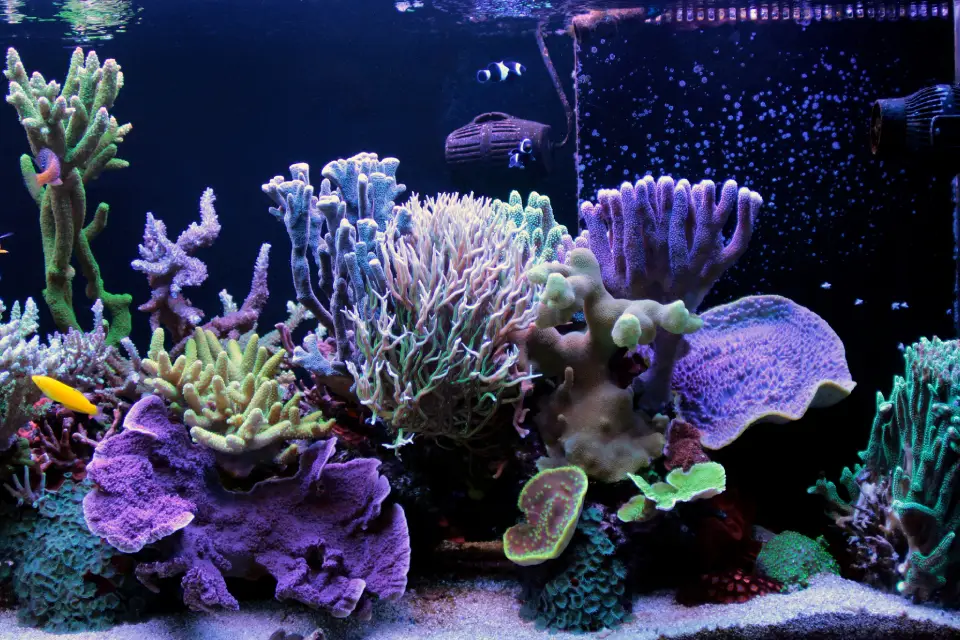Algae growth is one of the most common challenges faced by aquarium owners. While some algae are natural and even beneficial in small amounts, unchecked growth can quickly turn your tank cloudy, unpleasant, and unhealthy for aquatic life. Algae not only obscure visibility but also compete with fish and plants for vital nutrients and oxygen. To maintain a vibrant and balanced aquatic environment, it’s essential to adopt a proactive approach that combines routine cleaning with effective prevention. This includes physical removal of algae from glass and decorations, managing light exposure, maintaining proper water chemistry, and performing regular water changes. By understanding and applying these strategies, you can keep your aquarium clear, beautiful, and thriving.

Understanding Algae in Aquariums
Algae are simple, plant-like organisms that thrive in aquatic environments. While a certain amount of algae is natural and can even be beneficial, excessive growth can lead to problems such as oxygen depletion and unsightly tanks. Common types of aquarium algae include:
- Green Algae: Often indicates a healthy tank but can become problematic if overgrown.
- Brown Algae (Diatoms): Common in new tanks, forming a brown film on surfaces.
- Blue-Green Algae (Cyanobacteria): Forms slimy layers and can be challenging to eradicate.
- Hair Algae: Long, thread-like strands that can overtake plants and decorations.
Effective Algae Cleaning Techniques
Regular maintenance is key to controlling algae growth. Here are some effective cleaning methods:
Manual Removal:
Use algae scrapers or pads to gently clean the aquarium glass, and carefully scrub decorations and artificial plants. Take care not to disturb the beneficial bacteria colonies, as they play a vital role in maintaining a healthy aquatic ecosystem.
Gravel Vacuuming:
During routine water changes, use a gravel vacuum to remove built-up waste, uneaten food, and debris from the substrate. This helps lower nutrient levels that promote algae growth and maintains a cleaner, more stable environment for your aquatic life.
Filter Maintenance:
Clean your aquarium’s filter media regularly to prevent clogging and ensure effective waste removal. A clean filter helps reduce nutrient buildup in the water, which can significantly slow algae growth and improve overall water clarity and quality.
Preventive Measures to Control Algae
Preventing algae is more effective than dealing with an overgrowth. Implement these strategies:
Lighting Control:
Limit your aquarium lighting to 8–10 hours per day to avoid overstimulating algae growth. Installing a timer can help maintain a consistent light cycle, supporting plant health while discouraging unwanted algae from taking over your tank.
Avoid Direct Sunlight:
Place your aquarium away from windows or areas with direct sunlight. Natural sunlight can significantly increase algae growth by boosting photosynthesis, which results in faster algae spread and more frequent cleaning requirements.
Proper Feeding:
Feed your fish only what they can consume within a few minutes, once or twice a day. Overfeeding leads to leftover food and waste, which decompose and release nutrients that algae feed on, accelerating their spread.
Regular Water Changes:
Change 10–15% of the tank’s water weekly to remove dissolved waste and dilute excess nutrients. Regular water changes are one of the most effective ways to maintain water quality and keep algae under control.
Live Plants:
Adding live aquatic plants helps absorb nutrients like nitrates and phosphates that algae rely on. By outcompeting algae for resources, live plants naturally reduce algae growth and contribute to a balanced, healthy tank ecosystem.
Natural Algae Control Methods
Introducing certain species can aid in algae control:
Algae-Eating Fish and Invertebrates:
Species like Amano shrimp, Nerite snails, and Otocinclus catfish consume various algae types, assisting in maintenance.
Balanced Ecosystem:
Maintaining a balanced number of fish, plants, and microorganisms creates a stable environment less prone to algae outbreaks.
Chemical Algae Treatments: Use with Caution
While chemical algaecides are available, they should be a last resort. These treatments can harm beneficial bacteria and sensitive aquatic life. Address underlying issues like overfeeding and excessive lighting before considering chemical solutions.
Conclusion
Keeping algae under control is key to a clean, healthy, and visually appealing aquarium. With consistent maintenance—like regular cleaning, mindful feeding, and managing light exposure—you can prevent excessive algae growth and create a stable environment for your aquatic life to thrive. Incorporating live plants and routine water changes adds another layer of protection, helping you enjoy a crystal-clear tank all year round.
Ready to achieve a pristine, algae-free aquarium?
At Champion Aquariums, we specialize in custom aquarium design, installation, and maintenance services tailored to your needs. Contact us today at (954) 981-3100 or visit us at 354 SW 13th Ave, Pompano Beach, FL 33069, to schedule a consultation. Let us help you create and maintain a vibrant aquatic environment.
FAQs
What causes excessive algae growth in aquariums?
Excessive algae growth is typically due to factors like prolonged lighting, overfeeding, high nutrient levels, and direct sunlight exposure.
How often should I clean algae from my aquarium?
Regularly inspect your tank and clean algae as needed, typically during weekly maintenance routines.
Are there fish that help control algae?
Yes, species like Siamese algae eaters, Otocinclus catfish, and certain snails can help manage algae levels.
Can live plants reduce algae growth?
Absolutely. Live plants compete with algae for nutrients, often reducing its growth.
Is it safe to use chemical algaecides in my aquarium?
Chemical treatments should be used cautiously, as they can affect beneficial bacteria and sensitive species.
Does algae indicate poor water quality?
Not necessarily, but sudden or excessive algae blooms can signal imbalances in the aquarium’s ecosystem.
Bibliography and Sources
- “Prevention and Control of Nuisance Algae,” Aqueon.
- “How to Control and Prevent Algae in Your Fish Tank,” The Spruce Pets.
- “Freshwater Aquarium Algae,” Wikipedia.
